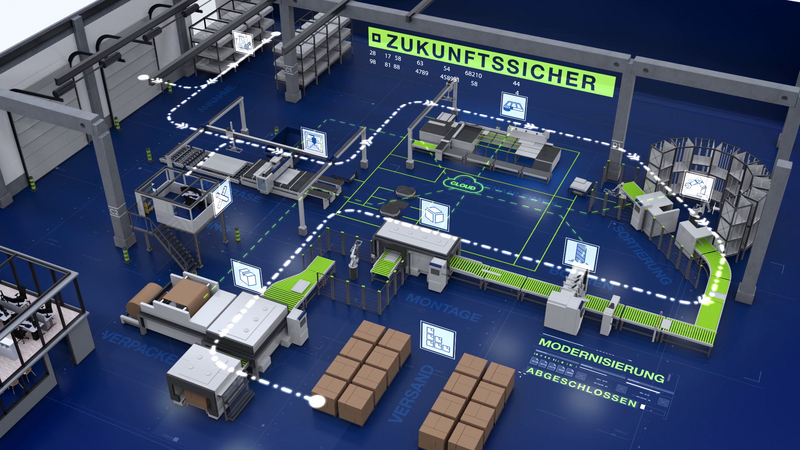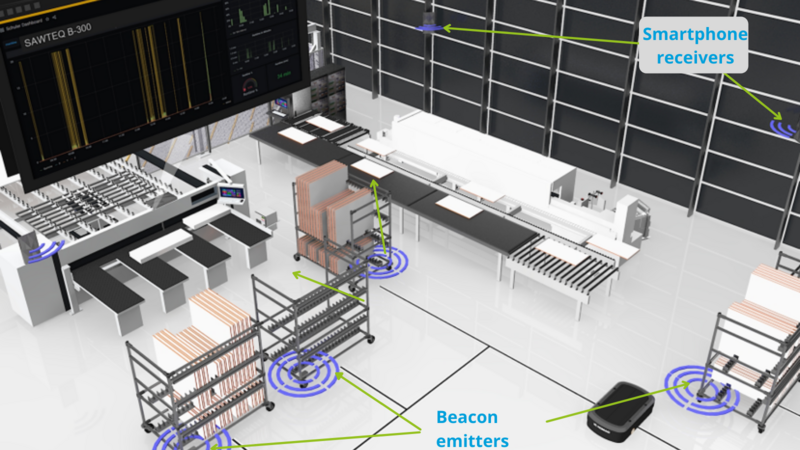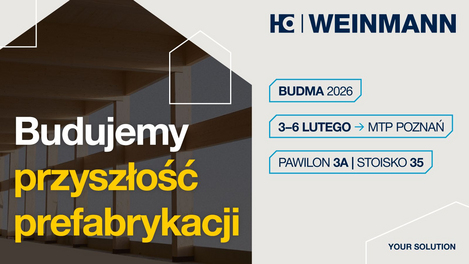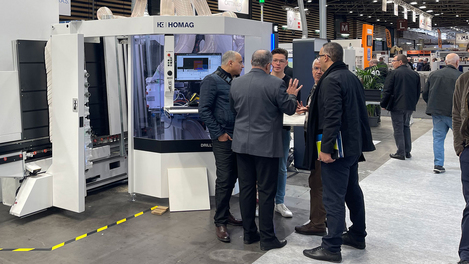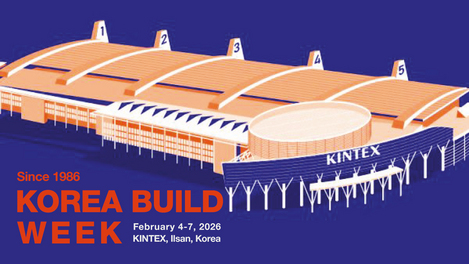Goodbye, stopwatch. Hello, digital value stream optimization!
Comprehensive production data acquisition is a major challenge in manufacturing operations with machines of several generations from different manufacturers. Nevertheless, heterogeneous machine environments are often not the exception, but the rule.
This article was published in möbelfertigung 01/2021: Here you can read the whole issue [German]
In addition, very short throughput times and a large number of fast-moving parts are common in productions in the wood and furniture industry, which make measuring production data even more difficult. In the past, these general conditions made automated data acquisition almost impossible. Until now, anyone who wanted to perform value stream optimization sent an employee with a stopwatch into the production hall. In this article, Florian Hauswirth and Bastian Schulz from SCHULER Consulting explain how the production value stream can be digitally recorded with a smartphone and how automated value stream analyses can be generated.
Collecting production data in heterogeneous machine environments digitally
The many different control instruments in the cockpit of an airplane ensure that the pilot can safely navigate his air vehicle from one place to the next. If these operating and control instruments fail, turbulence is inevitable. Thorough checks of all these functions by experienced technicians and the flight crew on the ground are intended to prevent this worst-case scenario. But what does this excursion into aviation have to do with production data acquisition in the wood and furniture industry?
Productions flying blind
A central "production cockpit" in which all information about the production run together is in very few cases already a reality for furniture manufacturers today. Collecting and evaluating machine data from complex production processes has been a laborious and cost-intensive process with high personnel requirements. As a result, many manufacturers tend to neglect production data collection and lack comprehensive information about their production. They are neither aware of the actual state of their production nor of the potential for optimization that lies dormant in their production halls. Without a precise knowledge of machine or order statuses, they navigate their production as if flying blind.
Of course, the state of "flying blind" is not desirable. In order to evaluate and improve the processes in their production, many manufacturers relied in the past on tried and tested methods such as the measurement of standard times. Expensive REFA and value stream recordings were carried out, which, however, have to be updated again and again, as they only depict a snapshot. These methods do have their right to exist and can be extremely useful as well as offer high competitive advantages - just not recorded as we did 20 years ago. Considering the complexity of today's processes, these analysis methods involve a great deal of effort. In addition, they are enormously error-prone due to the reliance on manual methods of data collection.
The potential of value stream mapping
Value stream management is a strategic approach to streamlining a company holistically. It looks at production, material and information flows. A value stream analysis provides a very good overview of the situation in production and gives you all the tools you need to optimize production processes in a targeted manner. This is important, because the weakest process determines the production performance - and this one is not always easy to identify.
In addition, productions today are becoming more and more complex. The end customer's growing need for individualization has a direct impact on manufacturers. Those who want to remain competitive must overcome the challenges of the market and their own historical growth. In this context, value stream mapping offers a very good approach to obtaining a sound overview of one's own production, identifying redundant and cost-intensive processes, and remaining fit for the future through targeted optimization.
It is important to note that the significance of a value stream analysis always depends on the quality of the production data collected. In heterogeneous machine environments with machines from different manufacturers of different ages, however, the data often cannot even be read out of the systems. This is a major challenge in many places, so people resort to manual measurement methods. But even this is problematic, because where machine running times are recorded manually - for example with a stopwatch - the data is often incomplete or incorrect.
Gaining (back) the overview with digital technologies
In our "Industry 4.0" team at SCHULER Consulting, we tested the use of digital technologies for data collection in the context of a value stream mapping. The result: already common smartphone technology offers an answer to the challenges in complex machine environments. Thanks to a "digital value stream analysis" performed with smartphones, it is possible to capture production data regardless of the machine type, manufacturer or application area - and without a great deal of personnel effort or high implementation costs.
In the subsequent value stream optimization, the main focus is on the digital generation of the value stream map, and this without manual intervention. The goal is to optimize companies on a daily and holistic basis. The continuous improvement process is rethought: changes and implemented optimizations can be tracked in detail through the use of digital technologies. The effect of the optimization measure is not only shown on individual cells, but in the context of the entire company.
Mapping the production value stream with the smartphone
At SCHULER Consulting we offer the service in a set consisting of proven calculation methodology, Bluetooth low energy beacons and smartphones. The smartphones do not have any software interfaces and are therefore completely externally executable. Technically, only the processor, memory, sensor technology and connection protocols are used by the smartphones - the rest is deactivated and protected at the root level. The smartphone ultimately acts like a sensor box on which various applications run.
In production, the smartphone handles the external sensory monitoring of machines and workstations. In conjunction with the Bluetooth LE beacons, for example, it can locate the stacks in a production. Combined with our costing methodology, this hardware and software set can be used to collect a lot of machine and operational data with almost no employee interaction. The technology works for any machine and in any production context, whether furniture, kitchen, store or wood construction.
Manufacturers thus get an overview of current unit output from every machine and many workstations. In this way, they record the actual value-added time worked in their production and gain (back) an overview of their production processes. Finding every material stack in production at the push of a button, viewing the progress of current orders, receiving target and processing times as well as automatically generated unit costs is thus no longer just wishful thinking, but the next step towards complete production transparency.
Digital and practical
As consultants, we understand the entrepreneurial thinking and actions of our customers. For them, the question of the actual benefit and application for their own, individual situation is always relevant. Knowing at all times whether production is in a state of flux and being informed about one's own value stream, is something that many people associate from past experience with high costs, an enormous amount of time required for implementation, and very little flexibility overall.
Digital value stream optimization is now initiating a change in thinking: Compared to other methods, a major advantage of digital value stream mapping is the uncomplicated and rapid implementation of the technology. Where an employee used to spend days manually recording machine time, production data is now obtained automatically. High personnel costs are thus a matter of the past. Since cost-effective mass hardware is used, customers benefit from a very good price-performance ratio at all levels.
Digital value stream mapping offers a cost-effective way for manufacturers to gain an overview of their production and subsequently initiate pinpoint optimization measures. In addition, this method bundles the advantages of digitization in an exemplary manner: Here, ease of use, universal applicability, cost-effective hardware, and low installation and maintenance effort combine to create a practical, digital solution for everyone.

